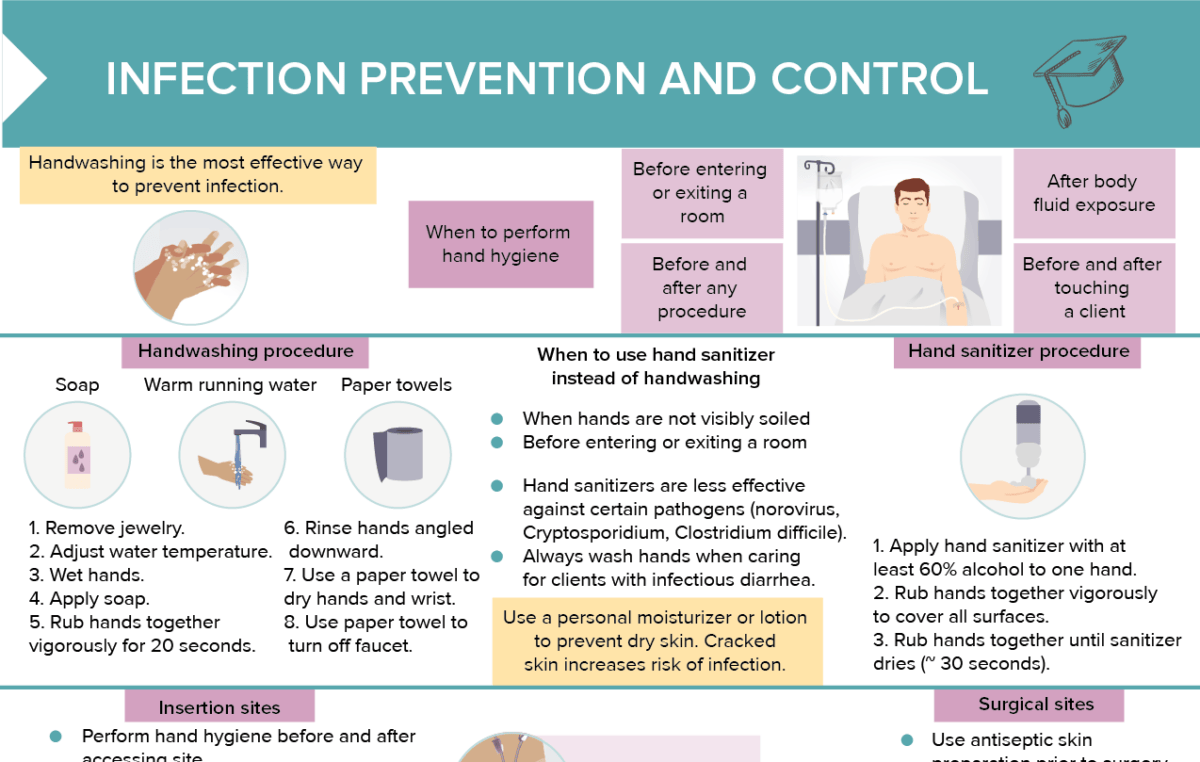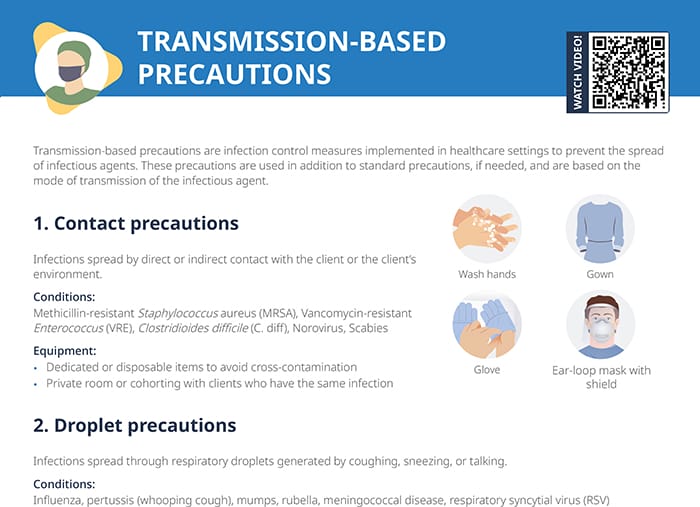What are transmission-based precautions?
Transmission-based precautions are infection control measures implemented in healthcare settings to prevent the spread of infectious agents.
Standard precautions are basic precautions used for all individuals, like hand washing and using gloves for many procedures. Transmission-based precautions are used in addition to standard precautions, if needed, and are based on the mode of transmission of the infectious agent a client may be affected by.


When should transmission-based precautions be used?
Transmission-based precautions should be used in addition to standard precautions when caring for clients who are known or suspected to be infected with contagious pathogens that can be transmitted through direct or indirect contact, droplets, or airborne particles. They are critical for preventing the spread of infections within healthcare settings, especially for clients who are highly susceptible or in close quarters with others.
The three types of transmission-based precautions
Contact precautions
Contact precautions are meant to protect from infections spread by direct or indirect contact with the client or the client’s environment. Examples include Methicillin-resistant Staphylococcus aureus (MRSA), Vancomycin-resistant Enterococcus (VRE), Clostridioides difficile (C. diff), Norovirus, and scabies.
Equipment/methods:
- Dedicated or disposable items to avoid cross-contamination
- Handwashing, gowns, gloves, ear-loop masks with shield
- Private room or cohorting with clients who have the same infection
Droplet precautions
Droplet precautions are meant to protect from infections spread through respiratory droplets generated by coughing, sneezing, or talking. Examples include influenza, pertussis (whooping cough), mumps, rubella, meningococcal disease, and respiratory syncytial virus (RSV).
Equipment/methods:
- Surgical mask: worn by visitors and healthcare workers when within 3 feet of the client
- Private room or cohorting with clients who have the same infection
Airborne precautions
Droplet precautions are meant to protect from infections spread through airborne particles that remain infectious over long distances when suspended in the air. Examples include tuberculosis, measles (rubeola), varicella (chickenpox), and severe acute respiratory syndrome (SARS).
Equipment/methods:
Clients are placed in an airborne infection isolation room (AIIR), a private room with negative pressure ventilation to prevent the escape of airborne particles. Keep the door closed to maintain negative pressure.

